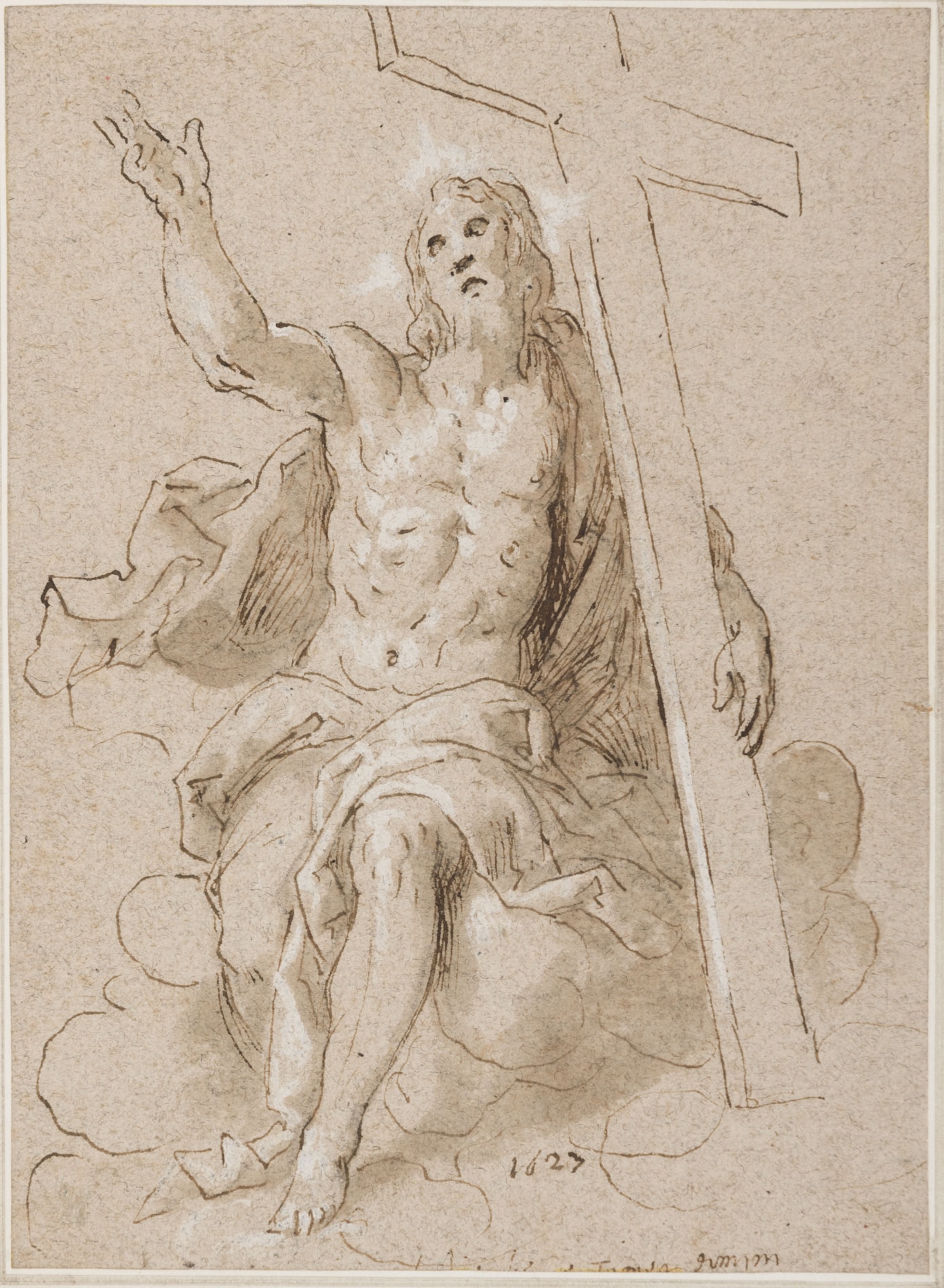Jacopo PALMA GIOVANE
(Venice 1548 - Venice 1628)
The Risen Christ
Pen and brown ink and brown wash, with touches of white heightening, on buff paper, laid down.
Dated 1627 at the lower centre.
An illegible inscription in brown ink at the bottom edge, cut off.
252 x 185 mm. (9 7/8 x 7 1/4 in.)
Dated 1627 at the lower centre.
An illegible inscription in brown ink at the bottom edge, cut off.
252 x 185 mm. (9 7/8 x 7 1/4 in.)
Palma Giovane’s drawings have long been admired by collectors. The 18th century French connoisseur Antoine-Joseph Dézallier d’Argenville wrote of the artist that ‘There is nothing more spirited than his drawings: his pen…is fine & light; it gives off imaginative fireworks, a vivacity of genius that has few equals.’ Similarly, the 18th century English collector Henry Reveley noted of Palma that ‘His drawings have great merit. They are in a free slight manner: the figures are usually outlined with a pen, and washed; though others are penned only, with a kind of ragged stroke: his most finished ones are heightened; and some are handled in red chalk: but it is remarkable that the extremities of his figures are scarcely ever made out; and there is a certain character prevailing through the whole, by which they are recognized from those of any other master.’ Significant groups of drawings by Palma Giovane are today in the collections of the Staatliche Graphische Sammlung in Munich (which holds more than four hundred drawings by the artist), the Uffizi in Florence, the Accademia Carrara in Bergamo and the Albertina in Vienna.
The pose of Christ in the present sheet is close, albeit without the cross, to that of the central figure in Palma Giovane’s massive painting of Christ in Glory with the Virgin and Saint Mark in the Venetian church of San Francesco della Vigna.
The pose of Christ in the present sheet is close, albeit without the cross, to that of the central figure in Palma Giovane’s massive painting of Christ in Glory with the Virgin and Saint Mark in the Venetian church of San Francesco della Vigna.
Known as Palma Giovane to distinguish him from his great-uncle, the painter Palma Vecchio, Jacopo Negretti studied in Pesaro and Urbino, where he gained the financial support of Guidobaldo II della Rovere, Duke of Urbino. The Duke sent him to complete his studies in Rome, where he spent several years, making copies after the frescoes of Michelangelo and Polidoro da Caravaggio. On his return to Venice in 1573 he may have worked in the studio of Titian, completing the Pietà left unfinished at the master’s death in 1576. To the influence of Titian was added that of Tintoretto and Veronese, which Palma combined with his experiences of Roman Mannerism to create what was to be his own distinctive, painterly style.
His first important commission came in 1578, when he provided three paintings for the ceiling of the Sala di Maggior Consiglio in the Palazzo Ducale in Venice. A prolific painter and draughtsman, Palma Giovane enjoyed a long career and received a large number of important commissions in Venice, particularly after the deaths of Tintoretto and Veronese. As well as providing altarpieces and ceiling paintings for numerous Venetian churches, Palma painted a cycle of pictures for the Ospedaletto dei Crociferi between 1583 and 1592 – a rare example in Venice of an entire cycle of paintings entrusted to one artist alone - and continued to contribute to the extensive redecoration of the various rooms of the Palazzo Ducale. He was also a talented portrait painter, although only a handful of examples are known today.
By the beginning of the 17th century Palma Giovane was firmly established as the leading painter in Venice, receiving commissions from patrons throughout Italy and beyond, such as the Emperor Rudolf II in Prague. He had a large and busy workshop, and more than six hundred paintings attributable to him or his studio are known.
Provenance
Nicolas Schwed, Paris
Private collection, Massachusetts.
Private collection, Massachusetts.








